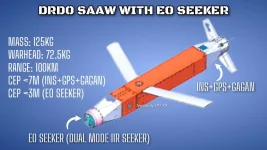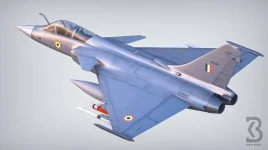- Views: 2K
- Replies: 4

India's Defence Research and Development Organisation (DRDO) recently unveiled the Uttam Active Electronically Scanned Array (AESA) radar, a groundbreaking advancement in indigenous military technology, at the IDAX 2024 defense exhibition.
This cutting-edge radar system has the potential to significantly enhance the stealth capabilities of Indian Air Force fighter aircraft like the LCA Tejas, Su-30MKI, and the future AMCA.
A key aspect of the Uttam radar's stealth-enhancing capability is its Low Probability of Intercept (LPI) feature. This makes it harder for adversaries to detect the radar's signals, allowing aircraft equipped with it to remain hidden from enemy sensors for longer. Furthermore, the radar's multiple sidelobe cancellation channels actively suppress its own emissions, further reducing its detectability.
The Uttam radar's agility and flexibility also contribute to its stealth advantages. The radar's electronically scanned agile beam can rapidly shift its focus, making it difficult for adversaries to lock onto and track its emissions.
Additionally, its wideband RF front end and high waveform agility make it extremely resistant to electronic countermeasures, which are often used to detect and track radar signals.
Beyond its stealth-enhancing features, the Uttam AESA radar is a multi-mode system, capable of handling air-to-air, air-to-ground, and air-to-sea missions, making it a versatile asset for a wide range of combat scenarios.
Its advanced imaging modes, including High Resolution Synthetic Aperture Radar (SAR) and High-Resolution Inverse Synthetic Aperture Radar (ISAR), provide detailed information about the battlefield, improving situational awareness and enabling precision targeting.
The Uttam AESA radar represents a significant step forward in India's quest for self-reliance in defense technology. By incorporating this advanced radar system into its fighter aircraft, the Indian Air Force can enhance its operational capabilities and maintain a technological edge in modern warfare.
The radar's compact and modular design ensures it can be seamlessly integrated into existing and future platforms without compromising performance or maneuverability.



